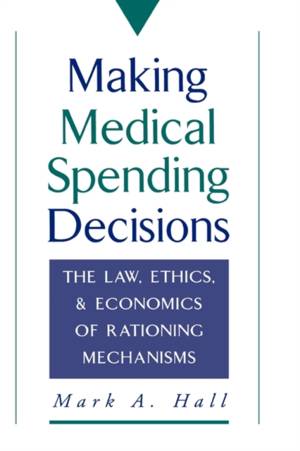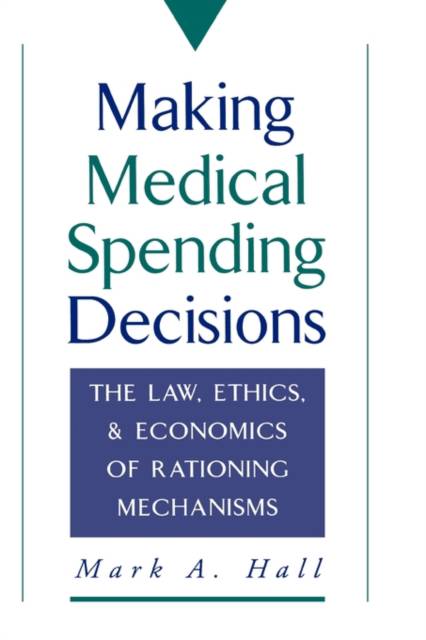
- Afhalen na 1 uur in een winkel met voorraad
- Gratis thuislevering in België vanaf € 30
- Ruim aanbod met 7 miljoen producten
- Afhalen na 1 uur in een winkel met voorraad
- Gratis thuislevering in België vanaf € 30
- Ruim aanbod met 7 miljoen producten
Zoeken
Making Medical Spending Decisions
The Law, Ethics & Economics of Rationing Mechanisms
Mark A Hall
Hardcover | Engels
€ 82,45
+ 164 punten
Omschrijving
A fresh and comprehensive exploration of how health care rationing decisions are made, this book offers not specific criteria for rationing--like age or quality of life--but a comparative analysis of three alternative decision makers: consumers paying out of pocket, government and insurance officials setting limits on treatments and coverage, and physicians making decisions at the bedside. Hall's analysis reveals that none of these alternatives is uniformly superior, and, therefore, a mix of all three is inevitable.
The author develops his analysis along three lines of reasoning: political economics, ethics, and law. The economic dimension addresses the practical feasibility of each method for making spending decisions. The ethical dimension discusses several theories--principally classic liberalism, social contract theory, and communitarianism--as well as concepts like autonomy and coercion. The legal dimension follows recent developments in legal doctrine such as informed consent, insurance coverage disputes, and the emerging direction of federal regulation. Hall concludes that physician rationing at the bedside is far more promising than medical ethicists and the medical profession have traditionally allowed.
The author develops his analysis along three lines of reasoning: political economics, ethics, and law. The economic dimension addresses the practical feasibility of each method for making spending decisions. The ethical dimension discusses several theories--principally classic liberalism, social contract theory, and communitarianism--as well as concepts like autonomy and coercion. The legal dimension follows recent developments in legal doctrine such as informed consent, insurance coverage disputes, and the emerging direction of federal regulation. Hall concludes that physician rationing at the bedside is far more promising than medical ethicists and the medical profession have traditionally allowed.
Specificaties
Betrokkenen
- Auteur(s):
- Uitgeverij:
Inhoud
- Aantal bladzijden:
- 312
- Taal:
- Engels
Eigenschappen
- Productcode (EAN):
- 9780195092196
- Verschijningsdatum:
- 12/12/1996
- Uitvoering:
- Hardcover
- Formaat:
- Genaaid
- Afmetingen:
- 165 mm x 243 mm
- Gewicht:
- 680 g

Alleen bij Standaard Boekhandel
+ 164 punten op je klantenkaart van Standaard Boekhandel
Beoordelingen
We publiceren alleen reviews die voldoen aan de voorwaarden voor reviews. Bekijk onze voorwaarden voor reviews.








